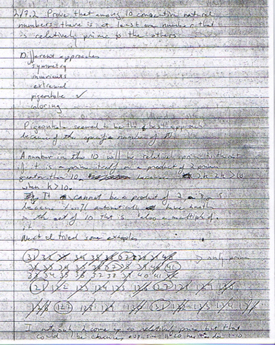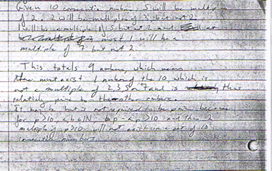

Discussion: There is a good accounting of this students thinking and path to this problem. Ultimately the pigeonhole principle is settleed on after recognizing that if two numbers amongst ten consecutive numbers have a common factor then it must be one of 2,3,5, or 7. Then an upper bound is obtained for how many numbers from ten consecutive integers can be divisible by one of these and it is shown that it will be at most 9.
Written response: Good investigation and excellent proof. Note that you should have said that at most two are multiples of tree but not a multiple of two, By the way, this was a Putnam problem.